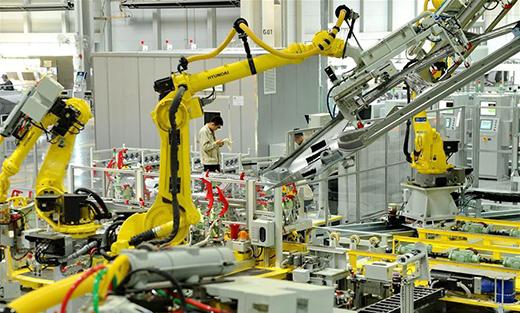BEIJING, Jan. 22 (Xinhua) -- Doom-mongers on the Chinese economy have relentless energy to question the country's performance, but a string of upbeat economic data should give them the chance to take a break.
The world's second largest economy reported 6.7 percent GDP growth in 2016, the lowest level in nearly three decades, but the rate is likely to top all other major economies, according to a report released Jan. 16 by the International Monetary Fund (IMF).
The growth rate was within the government's target range, and represents a medium-high level of growth, said Ning Jizhe, National Bureau of Statistics (NBS) chief.
With China's annual economic output reaching 11 trillion U.S. dollars, an increase of one percentage point of GDP is whopping, he added.
China's GDP growth has slowed from double-digit to single digit, as the country has embarked on a painful rebalancing, reducing dependence on investment and exports, and increasing consumption.
The doomsayers say that China's economy will enter freefall and a hard landing is inevitable.
"The data gives them a reality check," said Zhang Liqun, a researcher with the Development Research Center under the State Council. "Observers of the Chinese economy need to take a comprehensive view as they cannot see the woods for the trees.
Ning Jizhe highlighted more evidence that the Chinese economy had entered a "new normal" stage: reasonable growth and better economic structure.
NBS data for 2016 showed that the service sector accounted for 51.6 percent of GDP, and consumption contributed nearly two-thirds of GDP growth.
Strategic emerging industries such as new energy and advanced manufacturing outpaced traditional industries in terms of added-value growth. The number of start-ups grew by more than 20 percent from a year earlier to more than 5 million.
The per capital GDP of energy consumption fell 5 percent year on year, and the use of clean energy increased.
Zhang Liqun depicted China's progress in rebalancing as "significant," and a good start for the country's 13th Five-Year Plan (2016-2020). He said he expected more positive changes to take place in 2017.
Doomsayers also focus on China's stock market, which dropped by a third in value in 2015.
Analysts observed that with major indexes up by about 250 percent in just two years, China's stock market was dangerously overheated. However, it has given up the gains of irrational exuberance and is functioning steadily.
Currency has been another cause of concern for some observers. The U.S. dollar has risen since the U.S. economic recovery began to take a stronger foothold, while China's currency, the renminbi, has weakened sharply against the dollar, sparking fears of more drastic depreciation.
Guan Tao, former head of the international payments department in the State Administration of Foreign Exchange, said that China's economic fundamentals remained sound, providing solid foundation for the renminbi to stay stable.
"The outside shocks will be short-lived," he added.
Major multinational agencies are sanguine about China's economic outlook in 2017, as they see it as a stabilizer among a string of global uncertainties.
The IMF raised its forecasts for China's growth by 0.3 percentage point to 6.5 percent for 2017.
With the IMF predicting only 3.1 percent global growth for 2016, China's contribution would account for more than one-third of the world's growth.
The World Bank kept its forecast at 6.5 percent for 2017, saying strong domestic demand and growing infrastructure construction would offset the impact brought about by the decline in private investment.
But the bank also alerted China, among other countries, to uncertainties and risks brought by policies of the new U.S. administration, warning that "what happens in the United States will not stay in the United States".
Analysts said that China should be fully prepared for more capital outflows following more U.S. interest hikes in 2017, and that exchange rates and exports were likely to stay on a downward trend, but that this cannot be the reason alone for critics to be negative.




 A single purchase
A single purchase







